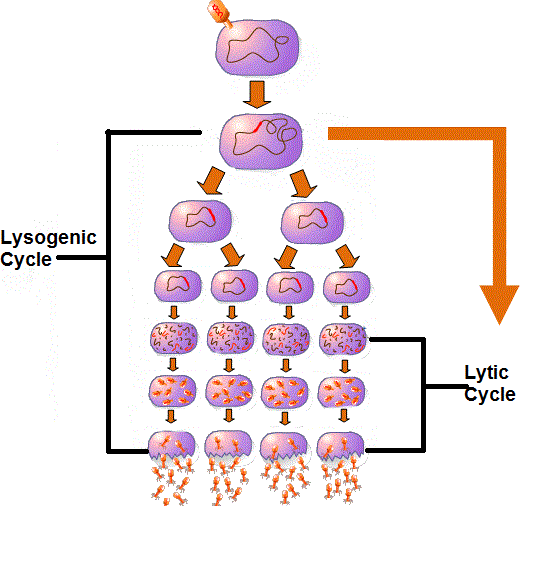Unlike a lytic virus, a lysogenic virus does not cause the cell wall to burst right away. Instead, a lysogenic virus is inactive for a period of time. In lysogenic infection, the viral nucleic acid is inserted into the host's DNA, where it is copied along with the host DNA. Virus DNA multiplies as the host cells multiply. Each new daughter cell created is infected with the virus.
Virus DNA that becomes embedded in the host's DNA is called a prophage. The prophage may remain part of the DNA of the host cell for many generations. Influences from the environment such as radiation, heat, and certain chemicals trigger the prophage to become active. It then removes itself from the host DNA and enters the lytic cycle.
![]() Watch the video below for an overview of the lysogenic stage.
Watch the video below for an overview of the lysogenic stage.
Source: The Lysogenic Cycle, kosasihiskandarsjah, YouTube
The diagram below shows the lysogenic cycle.

Source: Adapted from Lysogenic Cycle, Discovery Health